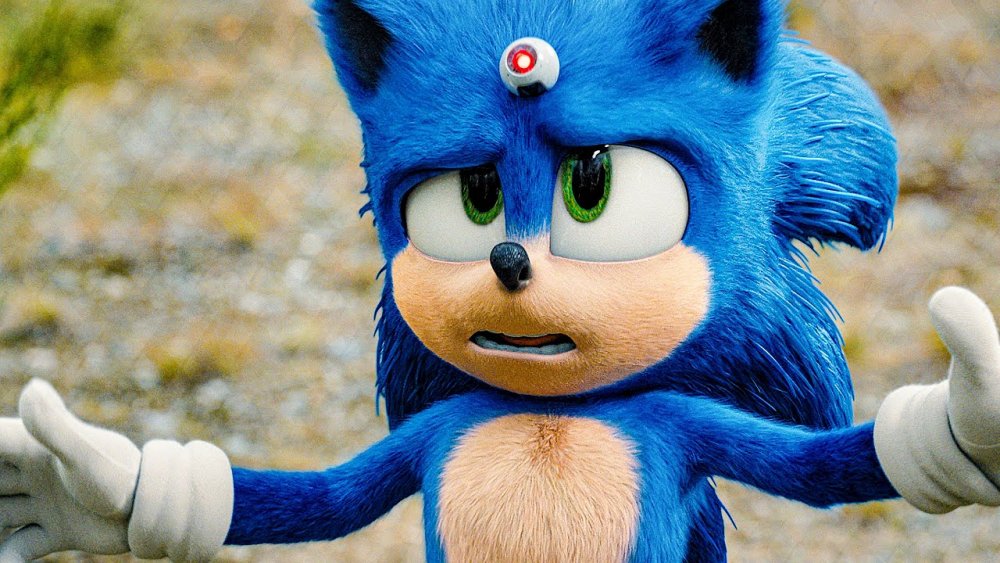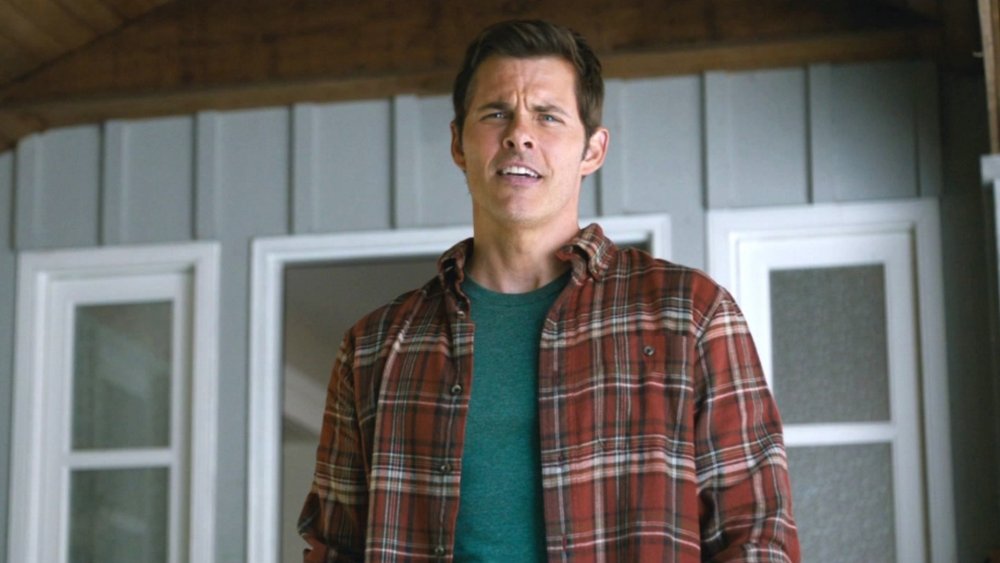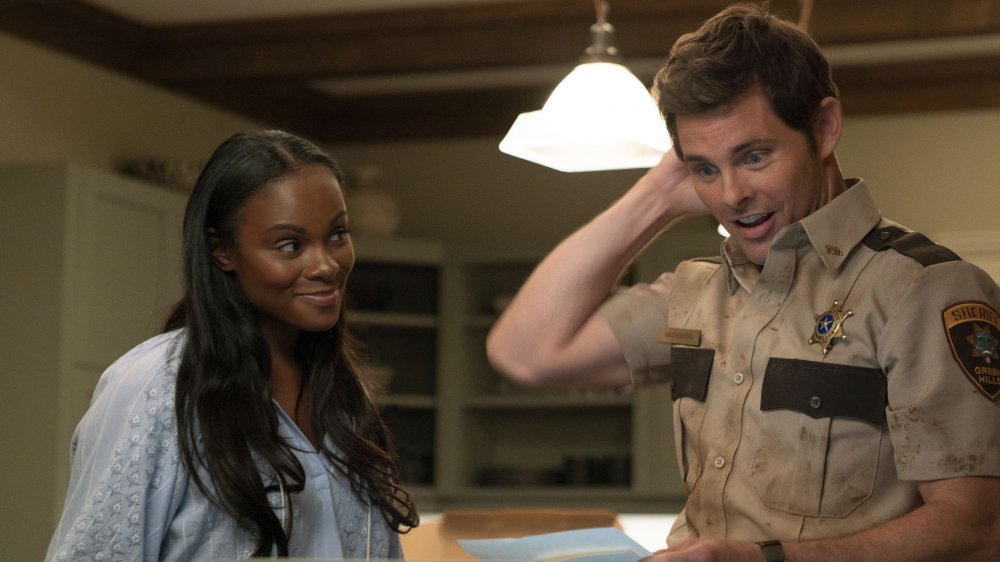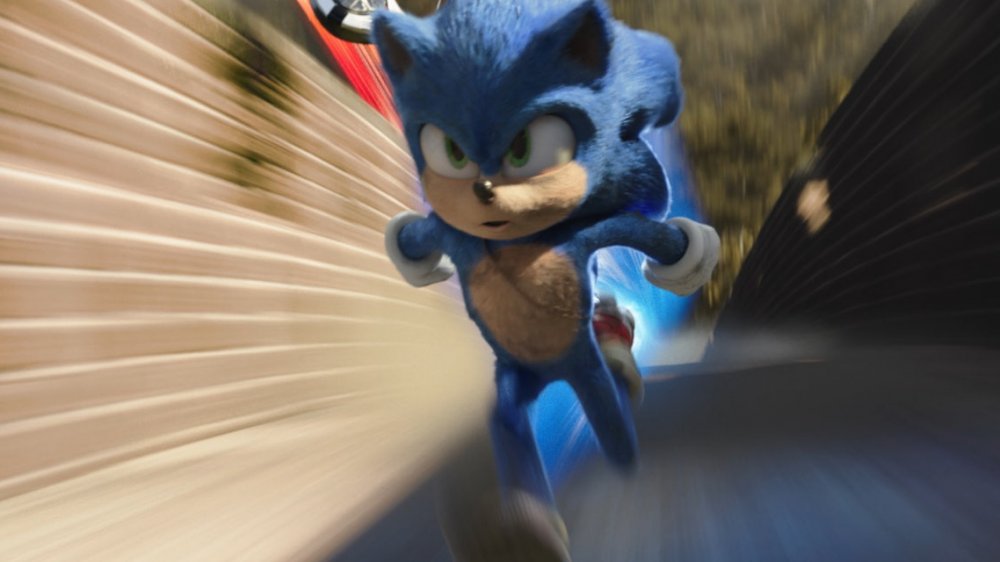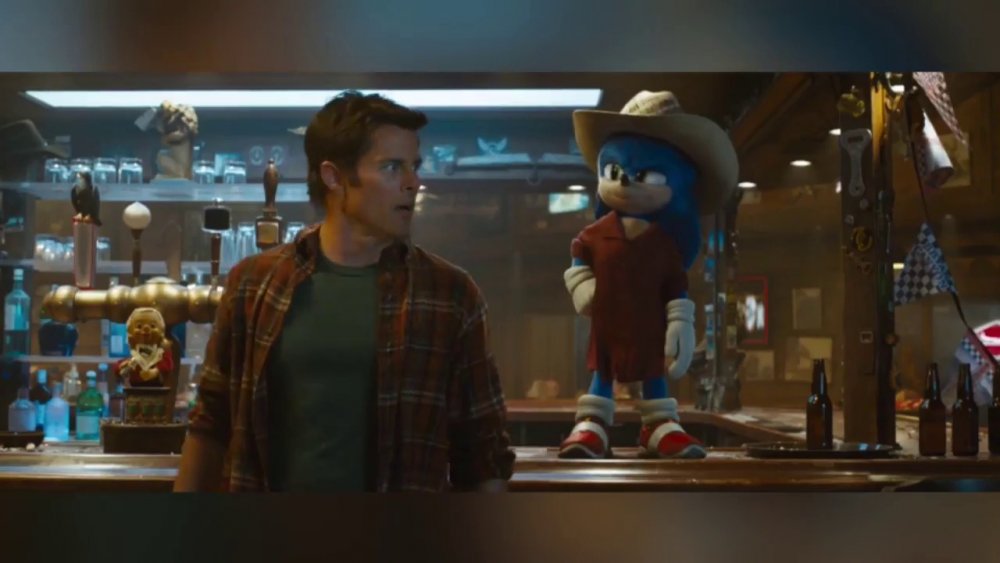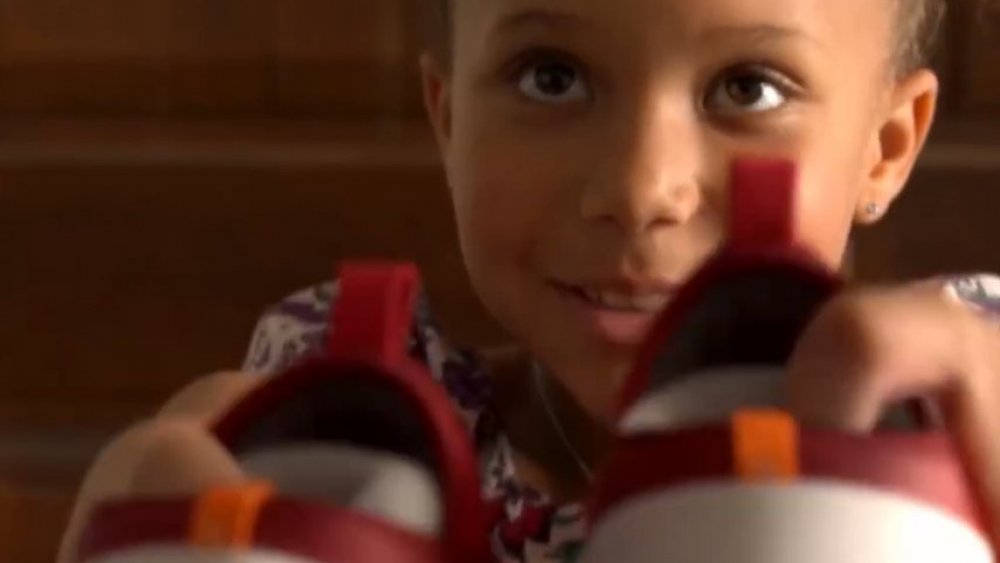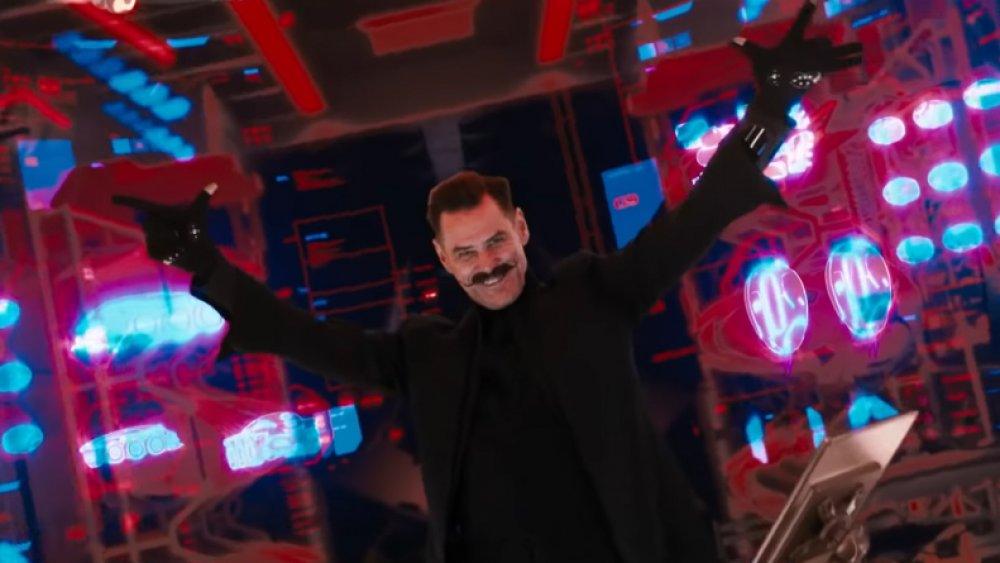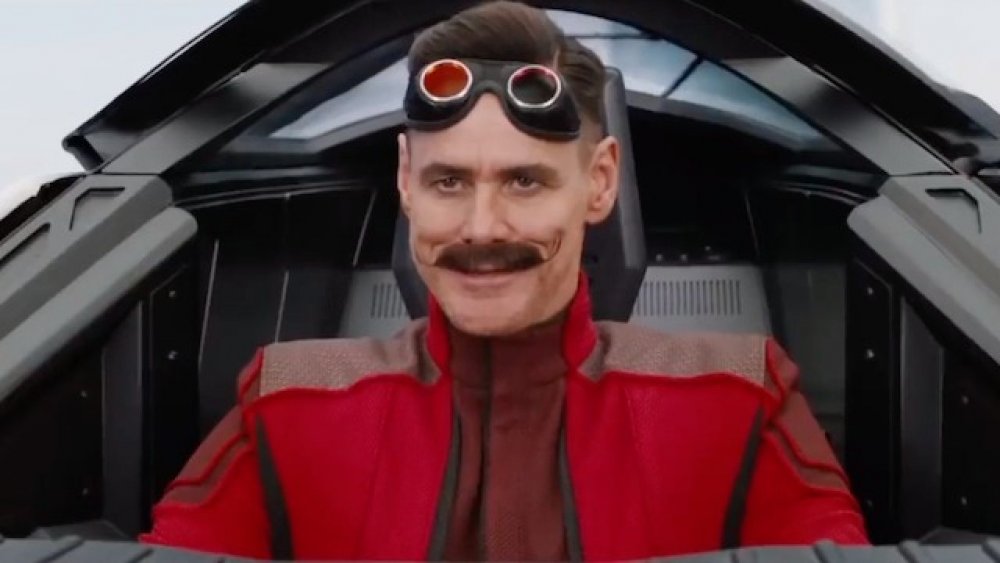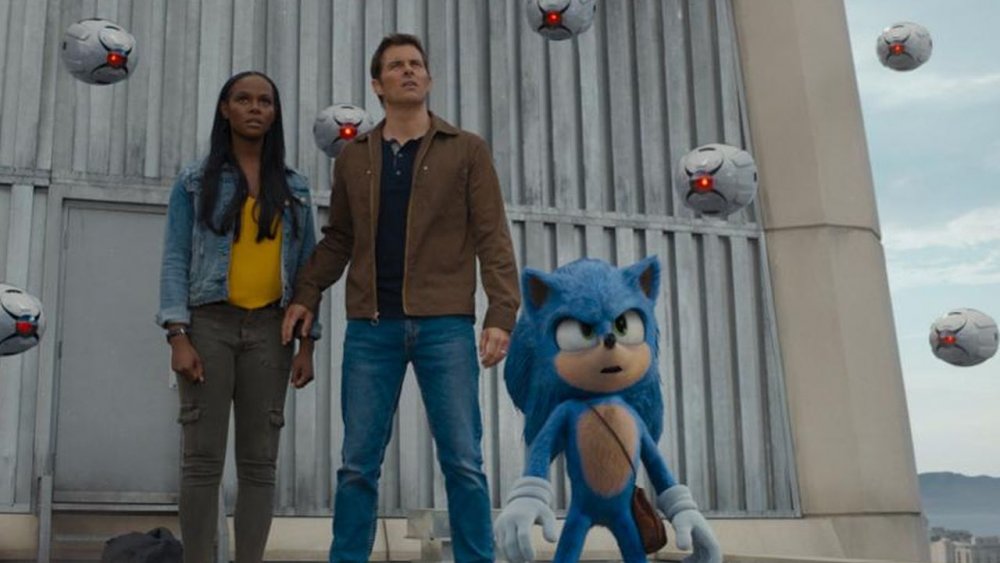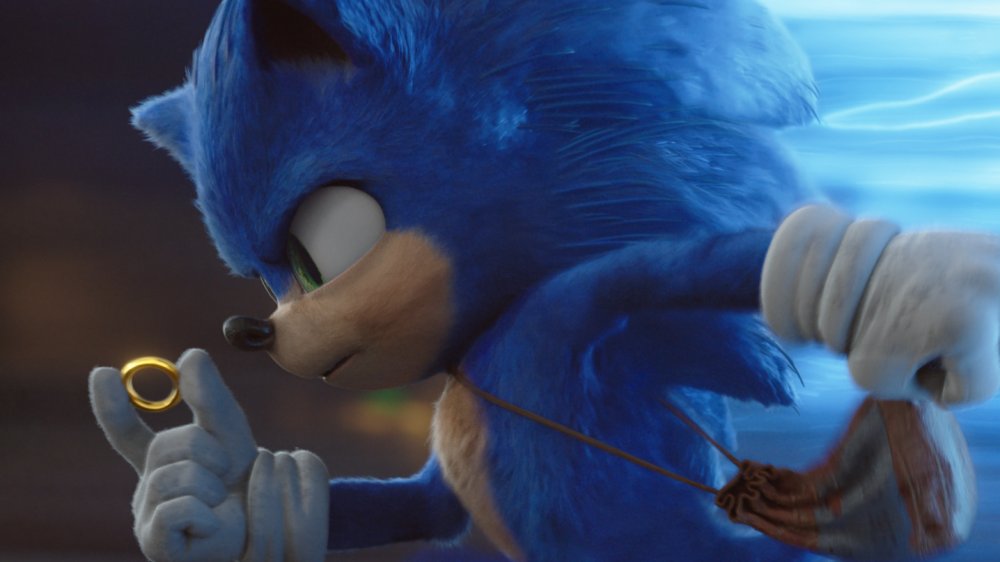5 Best And 5 Worst Things In Sonic The Hedgehog
After getting off to a bumpy start, with audiences responding so negatively to the first trailer that Paramount Pictures decided to push back the movie's release date in order to totally overhaul their main character, Sonic the Hedgehog has finally dashed into theaters. It seems as though the extra few months paid off; the critical reaction has ranged from so-so to surprisingly complimentary, with viewers responding positively to the film's quick pacing, family-friendly humor, and high entertainment value.
Sonic the Hedgehog stars James Marsden as good-hearted small-town cop Tom Wachowski, Jim Carrey as the villainous Dr. Ivo Robotnik, and Ben Schwartz as the voice of the titular blue alien. It's full of thrills, friendship, and lots of high-speed action, but as it dashes through its rapid-fire plot, it does stumble on occasion. Do the highs outweigh the lows? Read on as we run through the five best and five worst things about Sonic the Hedgehog.
Best: Tom's strong dad energy
Sonic is a fast-moving blue alien who can occasionally channel earth-shattering bolts of electricity. Fortunately, he's got his good pal Tom to keep him grounded. James Marsden does an excellent job of balancing out Sonic's hyperactive energy as Tom, approaching the ever-increasingly wild predicaments the two of them find themselves in with a positive attitude and a remarkably patient sense of humor. Filling in the roles of a classic buddy movie team, Tom acts as the straight man to Sonic's frenetic wise guy, but that doesn't mean Sonic gets all the laughs.
Rather, despite not having any kids of his own, Tom can't help but radiate some major dad vibes, thanks in no small part to some truly cringeworthy puns (at one point, when Sonic laments that he has to leave Earth to go live on a planet made up entirely of giant mushrooms, Tom quips "At least you won't be the only fun guy!"). Between his bad jokes, his tendency to play out full conversations with his donuts, and his fatherly protectiveness of Sonic, Tom really is the best friend an alien hedgehog could wish for, and he brings a refreshing, nurturing energy to the film.
Worst: Maddie's weirdly hostile sister
While Sonic the Hedgehog is at its best when it's just letting Sonic and Tom hang out together naturally, the film begins to show some signs of strain whenever it leans into the conflict between Tom and his sister-in-law Rachel (Natasha Rothwell). Although Tom and his wife Maddie (Tika Sumpter) are shown to have a mutually supportive and loving relationship, as soon as Maddie goes to visit Rachel and her young daughter JoJo (Melody Niemann), it becomes clear that Rachel flat-out hates Tom, even going so far as to tell Maddie she thinks they should get a divorce.
The reason behind Rachel's open hostility toward Tom is never stated. Later, once Tom becomes a wanted fugitive, it's a little more understandable why Rachel doesn't want him in her house, but her animosity toward him is established well before that. Perhaps there's a deleted scene somewhere explaining her grudge against Tom, but her reasoning isn't even hinted at in the finished film. Considering that Tom is consistently portrayed as the film's co-hero alongside Sonic, it doesn't really make sense that Rachel is so strongly opposed to him, and leads to conflict that feels manufactured and forced. Family can be messy, especially when it comes to in-laws, but since Maddie and Rachel are shown to have a good relationship with each other, it feels strange that Rachel seems to have declared war on her sister's husband for no apparent reason.
Best: Sonic's Quicksilver moments
In 2014, X-Men: Days of Future Past helped moviegoing audiences realize the full comedic potential in speedster characters when Quicksilver (Evan Peters) zipped around a kitchen full of prison guards as time — from his perspective — slowed to a near standstill. Jim Croce's dreamy "Time in a Bottle" played during the scene, serving as an excellent auditory illustration of Quicksilver's lazy perception of time versus everyone else's perception of Quicksilver.
Sonic has two scenes that riff on a similar theme, when time seems to suddenly halt so that Sonic can leisurely move around, repositioning the people and objects around him to work to his advantage. The first takes place during a brawl during the first half of the movie, and the second during Sonic's penultimate showdown with Robotnik. Neither one is quite as satisfying as the scene in X-Men, but they're both still a lot of fun, and take great pleasure in showing off just how awesome super speed can be.
Worst: Hipster discrimination
After Tom reluctantly teams up with Sonic, agreeing to drive the extraterrestrial hedgehog to San Francisco because of Sonic's poor sense of direction, they stop briefly for supplies at a convenience store across from a bar. Predictably, while Tom is off getting road trip snacks, Sonic becomes curious about the bar, and heads inside, donning a coat, a cap, and a pair of sunglasses as a "disguise." Tom tracks him down, and Sonic convinces him to allow him to knock a few fun items off his bucket list, since he plans to leave Earth forever as soon as they reach San Francisco.
Unfortunately, after a fun montage of Sonic and Tom line dancing, throwing darts, and riding an electric bull, the two get targeted by a group of local bullies who tell them "their kind" is not welcome in the bar. What exactly do they mean by that? Apparently, they don't like that Tom and Sonic are... hipsters?
The fight that breaks out following this challenge feels a little random, like the movie running out of ideas to get from point A to point B and just throwing in the towel, but more concerning than that is the way the film makes light of discrimination. It's a strange thing to make into a punchline, and while the movie was likely trying to subvert the obvious expectation — that the bar patrons are uncomfortable with Sonic because he's a blue alien hedgehog — its attempt to equate "hipsters" with marginalized communities falls flat.
Best: Sonic gets new shoes
All that running can really take a toll on a hedgehog's feet and footwear, and after Sonic becomes injured, Maddie (a veterinarian) discovers while examining him that he's worn large holes in both his socks and his sad, mismatched, taped-together shoes. Of course, at the time Maddie notes the sorry state of Sonic's footwear, she has a much bigger concern, since Sonic is still unconscious after an explosion during a close call with Dr. Robotnik. However, little JoJo, Maddie's young niece, looks thoughtfully at Sonic's shoes, then runs off to her room, making it easy to guess her intent.
Sure enough, when Sonic wakes up and JoJo returns, she presents him with a pair of bright new red and white shoes. While it's definitely satisfying to see Sonic complete his video game look, it's even more fulfilling to see a little girl show compassion toward Sonic after he's spent the whole movie desperately pining for friends. It's clear from the beginning of the film that Sonic's constant chatter and exuberant nature belie a deep loneliness, as he laments that the only way for him to protect himself is for others to not know he exists. In giving Sonic her shoes, JoJo not only fulfills a practical need for him, but also an emotional one — she shows him that someone cares, and he's not alone.
Worst: Disproportionate conflict
Early on in Sonic the Hedgehog, after Dr. Robotnik forces his way into Tom's house, he has his drones open fire on Tom and Sonic, utterly destroying Tom and Maddie's kitchen and dining room. "This feels excessive!" Sonic observes as he and Tom try to escape the drones, and he's right. For much of the movie, the conflict feels off balance, as though it belongs in a much more grandiose film. Yes, it's about an electrically charged alien hedgehog running very, very fast, but even so, all Sonic and Tom are trying to do is get to San Francisco so they can live their lives in peace. It doesn't seem to balance out the extraordinary lengths to which Robotnik is willing to go to stop them.
Part of the issue is that it's unclear what Dr. Robotnik is even trying to do. He's lauded by many characters as being a supergenius, which he'd have to be to invent all of his machines, but his plan makes very little sense. He says he wants to study Sonic, but attempts to utterly annihilate him at every turn. Once he learns that Sonic's quills contain an infinite supply of energy, instead of attempting to learn how to harness that energy, he throws even more drones — and thus more guns — at the problem. His actions just don't seem to jibe with his motivations, and while the film waves this inconsistency away with a simple "he's crazy," it comes across as one of the weaker aspects of a mostly competent plot.
Best: Jim Carrey
It's been a long time since audiences have gotten to see Jim Carrey in full-on rubber-face mode, twisting his expressions and his body into the cartoonishly silly permutations that made him one of the biggest stars in the world in the mid-'90s. Following his Ace Ventura and Dumb and Dumber days, Carrey took on a series of more serious roles in films like The Truman Show and Eternal Sunshine of the Spotless Mind, which still played to Carrey's comedic sensibilities, but in much subtler ways. Now, Carrey is back with a vengeance, bringing every bit of his bizarre '90s energy to the character of Dr. Robotnik, who chews through scenery like a woodchipper and delivers every line cranked up to 11.
For fans nostalgic for Carrey's most famous roles, it's like climbing into a time machine. Watching him in Sonic the Hedgehog, it's hard to believe that it's been more than a quarter of a century since Ace Ventura, as Carrey channels the much younger version of himself with ease. In one particularly delightful scene, Robotnik dances as he works in his lab, and the whole sequence is just Carrey doing what Carrey does best, milking the visual medium and his unique skill set for all they're worth. Paramount could include a 20-minute extended version of Carrey dancing as a special feature on the home release of Sonic, and we'd be willing to bet that we'd still be sad when it ended.
Worst: Also Jim Carrey
For all of Carrey's comedic strengths, his performance winds up being somewhat out of sync with the rest of the movie. Carrey's over-the-top comedy doesn't entirely gel with the easy banter between Tom and Sonic, and his exaggerated physicality feels at odds with the grounded nature of the other human characters. Granted, Carrey's entire brand in the '90s was built around being an energetic, flamboyant weirdo in a sea of everymen, and that's definitely what he's doing here as well. But that sort of character feels almost out of place in Sonic, as though Dr. Robotnik's plot — even though it helps drive the main conflict of the movie — was just stapled on from a totally different film.
The problem may be that Carrey's playing a villain here, not the protagonist. The movie isn't built around him, and as such, it doesn't accommodate his overwhelming presence nearly as neatly as his starring vehicles have. It worked for a different villainous role, when Carrey played the Riddler in 1995's Batman Forever, but Sonic lacks the wacky, neon energy that helped Carrey's performance slot neatly into the Batman world. Here, although Carrey is undeniably a master of his craft, he winds up straining the seams of the film. To put it simply, Carrey is great, but he may just be too much for Sonic the Hedgehog.
Best: Love is all you need
The character of Sonic may be best known for his speed, but when it comes to the story of Sonic the Hedgehog, the film has a firm grasp on what's actually most important to the little blue guy, and it's not how fast he can run. Early in the film, after watching a group of kids congratulate one another after a Little League baseball game, Sonic plays a game of baseball by himself. Using his speed, he can play every position all at once, but after an entertaining sequence of Sonic running the bases, he holds up his hand for a high five and... no one's there.
The speedster sequences in Sonic are a lot of fun, but the film really finds its heart in its exploration of Sonic's isolation. While Sonic lies to himself, pretending that the imaginary friendships he's made up with the people of Green Hills are enough to sustain him, it's clear that he longs for connection with someone outside of himself, someone who knows and cares that he's there. After the final showdown with Robotnik, Sonic finally gets a real high five from Tom, which feels far more satisfying than Sonic's triumph over Robotnik. Ultimately, the film closes with Tom and Maddie making Sonic his own "cave" in their house, making him part of the family and proving with their actions that finally, Sonic has a place where he truly belongs.
Worst: The nonsensical ending
Although Sonic's ending with the Wachowskis is nothing short of perfect, the rest of the film's odd plot doesn't wrap up nearly so neatly. Early on in Sonic the Hedgehog, Pentagon officials meet to investigate the mysterious blackout that Sonic caused in Green Hills, and decide to hire Dr. Robotnik to look into it, since he's the smartest person they know. As events progress, the government also frames Tom as a terrorist, plastering his photo across every major news network along with headlines that label him a wanted fugitive. Ultimately, Sonic and Tom wind up sending Robotnik through a portal to the mushroom planet, wiping the government's asset off the face of the earth.
Yet at the end of the film, Tom is back at home, still talking about his career in law enforcement, and completely unconcerned that anyone might be looking for him. When Commander Walters (Tom Butler) knocks on their door, it isn't to arrest Tom or even to reprimand him, but to thank Tom and Maddie for their discretion, remind them not to say anything, and give them... a $50 gift card to Olive Garden? Sure, paying off Tom's Olive Garden comment from the beginning of the film is worth a chuckle, but it's at the expense of all logic. Shouldn't the government be concerned about what happened to Robotnik? Shouldn't they want to pin all the damage that occurred on Tom, who they already painted as a terrorist? Do they just not care anymore about the blackout? While we're thrilled that Sonic, Tom, and Maddie get to live happily ever after — at least until the sequel — it's hard to overlook just how little sense it makes.
